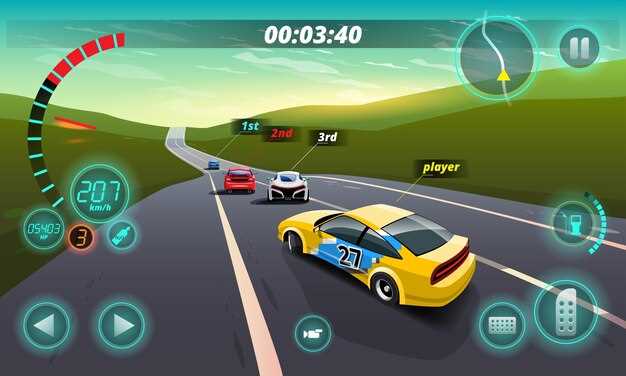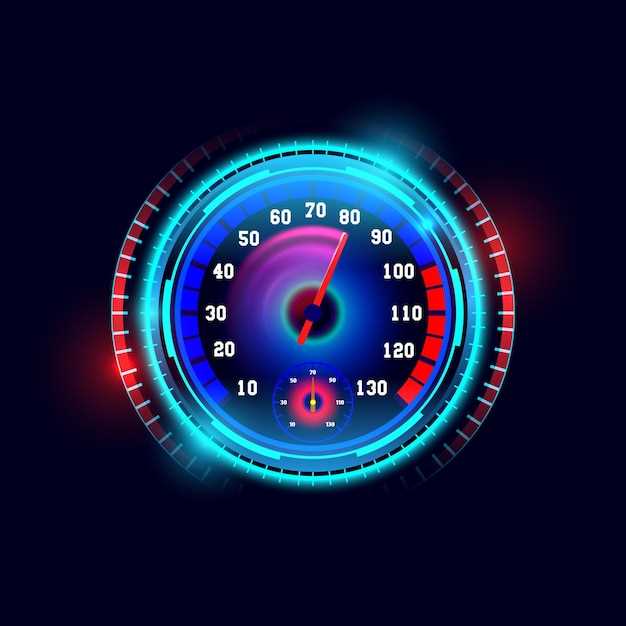
In the competitive world of GT racing, the evolution of technology plays a crucial role in enhancing performance and driver experience. Among the most significant advancements are integrated dash displays, which have revolutionized how drivers interact with their vehicles. These displays serve as the central hub for critical information, providing real-time data on vehicle performance, telemetry, and track conditions, all within the driver’s line of sight.
The integration of sophisticated dash displays in GT race cars has not only improved accessibility to essential data but has also enabled a more dynamic and intuitive driving experience. By consolidating various performance metrics into a single visual interface, drivers can make informed decisions quickly without taking their focus off the track. This technological leap is particularly vital in high-stakes racing environments where every millisecond counts.
As the demands of competitive racing continue to evolve, the implementation of advanced integrated dash displays becomes increasingly indispensable. With features such as customizable layouts, advanced graphics, and integration with race control systems, these displays not only enhance situational awareness but also provide a strategic advantage over competitors. The future of GT racing is undoubtedly being shaped by these cutting-edge technologies, paving the way for even greater innovation and performance on the racetrack.
Real-Time Data Analytics for Optimal Performance Monitoring

In modern GT race cars, integrated dash displays play a crucial role in real-time data analytics, enabling teams to monitor vehicle performance with unprecedented precision. These advanced displays provide instant access to critical metrics such as speed, tire pressure, engine temperature, and fuel consumption. By processing this data in real-time, drivers and engineers can make immediate decisions that directly impact race outcomes.
One of the key advantages of real-time data analytics is the ability to quickly identify performance issues. For example, if a driver experiences reduced grip, the dash can instantaneously show tire degradation levels. This allows the team to adjust strategies, such as modifying tire pressures or considering pit stop timing, without losing valuable race time.
Furthermore, integrated dash displays enhance the driver’s situational awareness. With vital statistics readily available, drivers can optimize their racing lines, manage their speed, and conserve fuel more effectively. This dynamic feedback loop between the driver and the analytics system creates a synergy that can often mean the difference between winning and losing in highly competitive environments.
Data analytics tools integrated into dash displays also enable post-race analysis. By reviewing collected data, teams can pinpoint areas of improvement for future races, making adjustments to their setups or strategies based on accurate historical performance. This continuous feedback mechanism is essential for evolving technology in GT racing.
Ultimately, the integration of real-time data analytics in dash displays fosters an environment of enhanced performance monitoring, ensuring that every aspect of the race car operates at its peak capacity throughout the competition.
Customization Options for Driver Preferences and Track Conditions
The integration of dash displays in GT race cars offers a variety of customization options tailored to driver preferences and specific track conditions. These customizations are pivotal for optimizing performance and enhancing the overall driving experience. One of the key features is the ability to configure the display layout, allowing drivers to prioritize information based on their individual driving style. For instance, some drivers may prefer larger readouts for crucial metrics such as speed and lap times, while others may focus on RPM gauges or tire pressure indicators.
Moreover, dash displays can be programmed to adapt dynamically to varying track conditions. In wet or slippery conditions, drivers can modify their dashboards to emphasize traction control settings and throttle response metrics. This ensures critical information is readily accessible without causing distraction, enabling quicker decision-making during high-pressure situations. The display can also switch between performance modes, providing visually distinct cues that help drivers gauge the optimal setup for current track conditions.
Furthermore, the customization options extend to color schemes and graphical representations. For example, during night races, drivers might choose brighter visuals for better readability, while in daylight, contrasting colors can help minimize glare. The ability to personalize alerts and warnings based on thresholds for engine temperature, fuel levels, or tire wear also contributes to a more intuitive interface, allowing drivers to maintain focus on the race instead of monitoring various indicators.
Advanced dash systems allow for real-time data integration from telemetry, providing drivers with instant feedback on their driving performance. The customization of these displays not only reflects a driver’s preferences but also adapts to the evolving nature of the track itself, making the integration of smart technologies in GT race cars a game-changer in the world of motorsport.
Integration with Advanced Telemetry and Communication Systems

The integration of integrated dash displays with advanced telemetry and communication systems is revolutionizing the way GT race cars operate on the track. These digital displays not only provide real-time data but also enhance the driver’s situational awareness and decision-making capabilities. By consolidating crucial information such as speed, tire pressure, and fuel levels into one cohesive unit, drivers can focus more on performance rather than managing multiple instruments.
Telemetry systems facilitate the transmission of data from various sensors installed throughout the vehicle. This real-time information is then relayed to the integrated displays, offering insights into vehicle dynamics and overall performance. Advanced algorithms analyze this data, allowing for predictive analytics that can alert drivers to potential issues before they escalate, such as mechanical failures or tire degradation.
Moreover, communication systems play a vital role in enabling seamless interaction between the driver and the pit crew. Instantaneous data sharing means that team strategists can make informed decisions based on current race conditions, optimizing tactics such as pit stops and tire choices. This synergy between digital displays and communication technologies allows for enhanced collaboration, maximizing the team’s competitive edge.
In conclusion, the fusion of advanced telemetry and communication systems with integrated dash displays significantly transforms the racing experience. By harnessing the power of real-time information, GT race cars can achieve higher levels of precision and performance, setting new standards in the world of motorsport.








